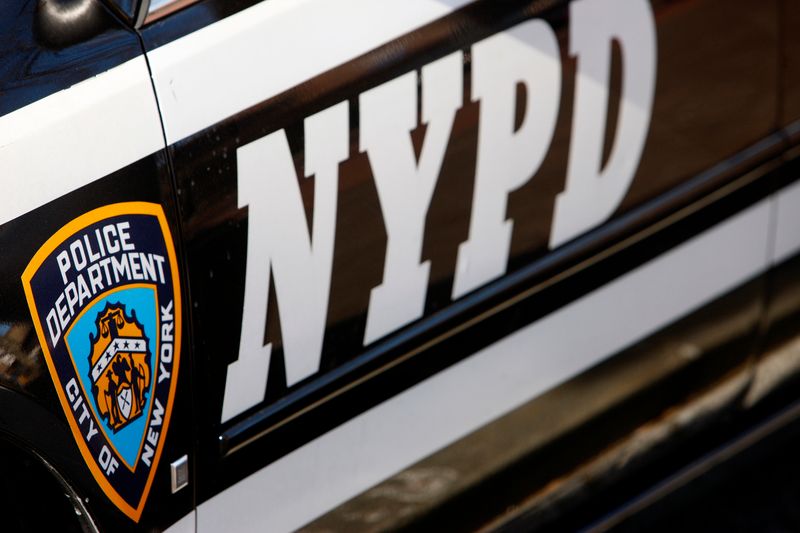
Series: The NYPD Files
Investigating America’s Largest Police Force
For more than two years, the aftermath of the police killing of Kawaski Trawick in New York has mostly been defined by what hasn’t happened.
Last summer, the Bronx District Attorney’s Office concluded it didn’t have evidence to charge the two officers involved in the fatal confrontation. This year, the Police Department determined “no wrongdoing was found” and said no officers would face discipline.
But that may not be the last word. The city’s police oversight agency, the Civilian Complaint Review Board, has brought disciplinary charges that could lead to the firing of the officer who shot and killed Trawick.
As ProPublica has detailed, Trawick, a 32-year-old Black man, was killed 112 seconds after two officers arrived at his home. One of the officers, who is Black, had repeatedly tried to stop his less-experienced partner from using force. But the younger officer, who is white, shot Trawick anyway.
Now, if the officer, Brendan Thompson, is found guilty in a departmental trial of violating NYPD rules, he could be fired under new disciplinary guidelines that the city adopted last year in the face of mounting scrutiny of the NYPD’s opaque and inconsistent system for punishing officer misconduct. The guidelines state that any officer found guilty of wrongful use of deadly force should be fired.
How the NYPD will handle the charges by the CCRB is unclear. The new guidelines are not law, and the police commissioner, Dermot Shea, still has the final say on officer discipline. The NYPD’s own internal investigation concluded no action was warranted, and both officers were allowed to return to normal duties.
But since ProPublica’s investigation, the killing of Trawick has drawn increasing attention from the mayor and other city leaders. And the charges by the CCRB will be an opportunity to revisit the question of whether the officers acted improperly in the deadly encounter with Trawick.
Lawyers for the CCRB will present the agency’s case in an NYPD tribunal, which will be open to the public. A department-appointed judge will decide whether the officers are guilty — a decision the police commissioner can affirm or overturn.
Mayor Bill de Blasio has frequently been asked about the case in recent weeks. De Blasio told WNYC’s Brian Lehrer last month that he was “concerned” after watching footage ProPublica posted of the shooting. “This deserves action by the Civilian Complaint Review Board.”
Watch Our Analysis of the Shooting
ProPublica scrutinized footage of the Kawaski Trawick shooting and found that the officers escalated the situation.
On Friday, Lehrer asked de Blasio about the case again, following news of the CCRB’s charges. De Blasio said, as he has previously, that the city will follow the new disciplinary guidelines.
“We have to have due process here,” said de Blasio, who is in his final year in office. But if there’s a guilty verdict, “the commissioner is going to follow” the guidelines.
While the CCRB itself has not taken a position on what the outcome of the case should be, the chair of the agency, the Rev. Fred Davie, tweeted Thursday from his personal account that Thompson, the officer who killed Trawick, “should be fired.”
It could be months before a departmental trial is held, and if it pushes into next year, the outcome could fall to whomever the next mayor chooses to serve as police commissioner.
While Thompson is facing the most serious charges, the CCRB also filed charges against his partner, Herbert Davis.
The two had arrived at Trawick’s apartment on April 14, 2019.
Trawick, who had a history of mental health and drug issues, had called 911 after locking himself out of his apartment. Others in the building had called too, saying that Trawick had been walking through the halls with a knife.
Firefighters had already pried open Trawick’s door and let him back when the officers, Thompson and Davis, arrived. Davis knocked on the door, which swung open a bit. After Davis pushed it open further, the officers saw Trawick by his stove still holding the serrated bread knife and a stick.
They told Trawick to drop the knife, while Trawick repeatedly asked them, “Why are you in my home?”
After less than two minutes, and despite his partner’s objections, Thompson fired a Taser. Then, after Trawick became enraged and ran toward the officers, Thompson fired his gun four times, killing Trawick almost instantly.
In addition to finding that Thompson wrongly fired both his Taser and gun, the CCRB found that both officers should not have entered the apartment in the first place, according to a letter the agency sent the family.
Asked about the charges, the NYPD told ProPublica, “We will review the CCRB’s findings.” Thompson did not respond to a request for comment; Davis declined to comment.
If Thompson is ultimately fired, it will be only the second time a CCRB prosecution has resulted in an officer’s firing since the agency was given that power almost a decade ago. In the other case, the NYPD fired Officer Daniel Pantaleo in 2019, five years after he put Eric Garner in a lethal chokehold.
June 12, 2021: This story originally misidentified which officer knocked on Kawaski Trawick's door and pushed it open. It was Herbert Davis, not Brendan Thompson.





